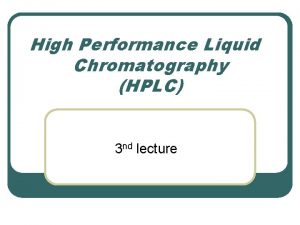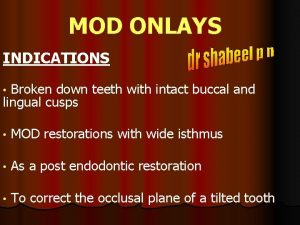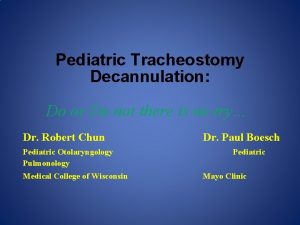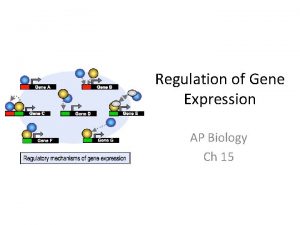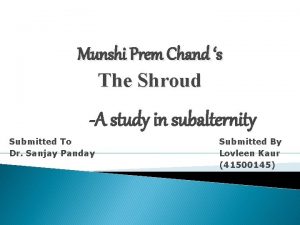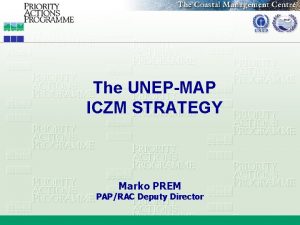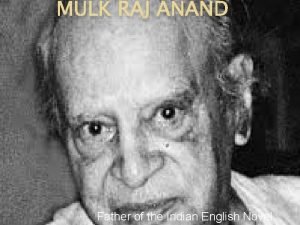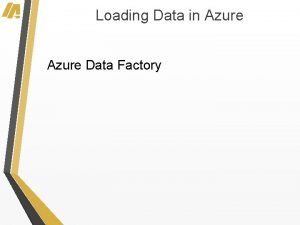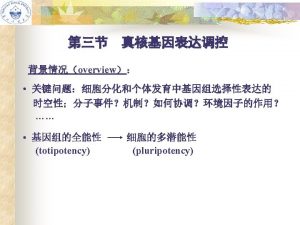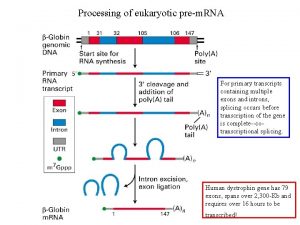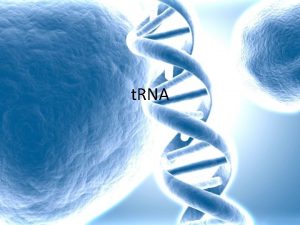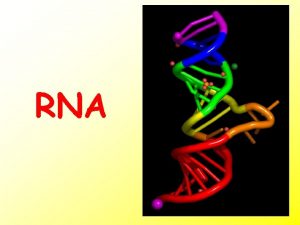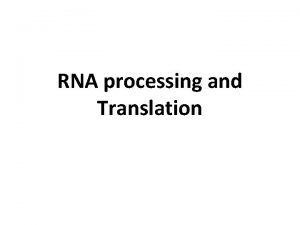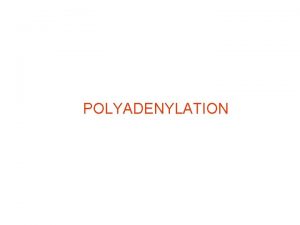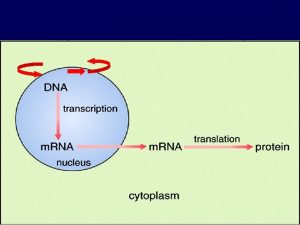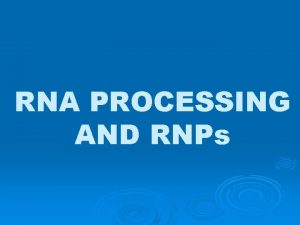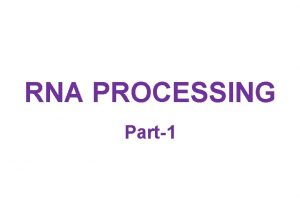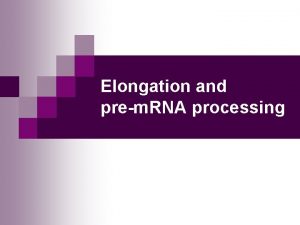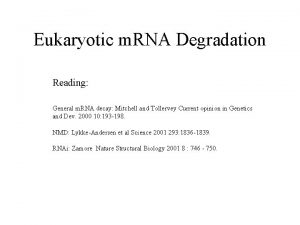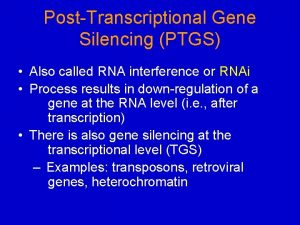Posttranscriptional Processes Processing of eukaryotic prem RNA capping



















- Slides: 19

Post-transcriptional Processes

• Processing of eukaryotic pre-m. RNA -capping -polyadenylation -splicing -editing • Nuclear transport

RNA Processing • Very few RNA molecules are transcribed directly into the final mature RNA. • Most newly transcribed RNA molecules (primary transcripts) undergo various alterations to yield the mature product • RNA processing is the collective term used to describe the molecular events allowing the primary transcripts to become the mature RNA.


RNPs Ribonucleoproteins = RNA protein complexes Ø The RNA molecules in cells usually exist complexed with proteins Ø specific proteins attach to specific RNAs Ø Ribosomes are the largest and most complex RNPs

Ribozyme • Ribozymes are catalytic RNA molecules that can catalyze particular biochemical reactions. • RNase P RNA is a ribozyme. • RNase P RNA from bacteria is more catalytically active in vitro than those from eukaryotic and archaebacterial cells. All RNase P RNAs share common sequences and structures.

Self-splicing introns: the intervening RNA that catalyze the splicing of themselves from their precursor RNA, and the joining of the exon sequences 1. Group I introns, such as Tetrahymena intron 2. Group II introns. ¡

Processing of eukaryotic pre-m. RNA

Alternative picture: co-transcriptional pre -m. RNA processing • This picture is more realistic than the previous one, particularly for long pre-m. RNAs

Heterogenous ribonucleoprotein patricles (hn. RNP) proteins • In nucleus nascent RNA transcripts are associated with abundant set of proteins • hn. RNPs prevent formation of secondary structures within pre-m. RNAs • hn. RNP proteins are multidomain with one or more RNA binding domains and at least one domain for interaction with other proteins • some hn. RNPs contribute to pre-m. RNA recognition by RNA processing enzymes

Capping p-p-p-N-p-N-p…. Capping enzyme (m. CE) p-p-N-p-N-p… GMP m. CE (another subunit) G-p-p-p-N-p-N-p… S-adenosyl methionine methyltransferases CH 3 G-p-p-p-N-p-N-p… CH 3

The capping enzyme • A bifunctional enzyme with both 5’-triphosphotase and guanyltransferase activities • In yeast the capping enzyme is a heterodimer • In metazoans the capping enzyme is monomeric with two catalytic domains • The capping enzyme specific only for RNAs, transcribed by RNA Pol II

Polyadenylation • • Poly(A) signal recognition Cleavage at Poly(A) site Slow polyadenylation Rapid polyadenylation

• G/U: G/U or U rich region • CPSF: cleavage and polyadenylation specificity factor • CSt. F: cleavage stimulatory factor • CFI: cleavage factor I • CFII: cleavage factor II

PAP: Poly(A) polymerase


PAP CPSF

PABPII- poly(A) binding protein II

PABP II functions: 1. rapid polyadenylation 2. polyadenylation termination
 End capping in hplc
End capping in hplc Indirect pulp capping
Indirect pulp capping Capping cast iron pipe
Capping cast iron pipe Onlay indications and contraindications
Onlay indications and contraindications Tracheostomy downsizing protocol
Tracheostomy downsizing protocol Autosoftcapping
Autosoftcapping Soft capping
Soft capping Granulation method
Granulation method Inlay definition in dentistry
Inlay definition in dentistry Concurrent processes are processes that
Concurrent processes are processes that Rna processing
Rna processing Voltage secure email
Voltage secure email Aareon crm
Aareon crm The shroud by premchand analysis
The shroud by premchand analysis Prem
Prem Prem geology
Prem geology Who is the father of indian english novel
Who is the father of indian english novel Raj rani vs prem adib
Raj rani vs prem adib On prem
On prem Bottom up processing example
Bottom up processing example
